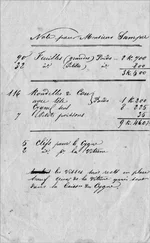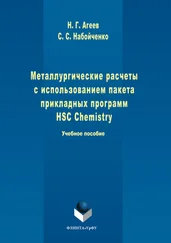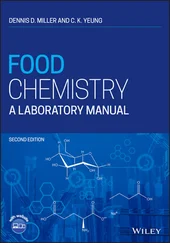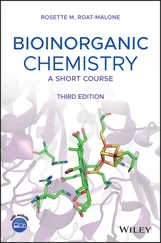1 Cover
2 Preface
3 1 Basic Electrical Principles 1.1 Overview 1.2 Basic Concepts 1.3 Electrochemical Cells 1.4 The Electrified Interface or Electrical Double Layer 1.5 Conductance 1.6 Mass Transport by Convection and Diffusion 1.7 Liquid Junction Potentials References
4 2 Potentiometry of Oxidation–Reduction Processes2.1 Overview 2.2 Measuring “Open Circuit” Potentials 2.3 Solution Redox Potential References
5 3 Potentiometry of Ion Selective Electrodes3.1 Overview 3.2 Liquid Membrane Devices 3.3 Glass Membrane Sensors 3.4 Crystalline Membrane Electrodes 3.5 Calibration Curves and Detection Limits 3.6 A Revolutionary Improvement in Detection Limits 3.7 More Recent Ion Selective Electrode Innovations 3.8 Ion Selective Field Effect Transistors (ISFETs) 3.9 Practical Considerations REFERENCES
6 4 Applications of Ion Selective Electrodes4.1 Overview 4.2 Case I. An Industrial Application 4.3 Case II. A Clinical Application 4.4 Case III. Environmental Applications 4.5 Good Lab Practice for H Electrode Use References
7 5 Controlled Potential Methods5.1 Overview 5.2 Similarities between Spectroscopy and Voltammetry 5.3 Current is a Measure of the Rate of the Overall Electrode Process 5.4 Methods for Avoiding Background Current 5.5 Working Electrodes 5.6 Pulse Amperometric Detection 5.7 Stripping Voltammetry 5.8 Special Applications of Amperometry 5.9 Ion Transfer Voltammetry References
8 6 Case Studies in Controlled Potential Methods6.1 Overview 6.2 Case I. Evaluating the Formal Potential and Related Parameters 6.3 Case II. Evaluating Catalysts – Thermodynamic Considerations 6.4 Case III. Studying the Oxidation of Organic Molecules 6.5 Case IV. Evaluating Catalysts – Kinetic Studies References
9 7 Instrumentation7.1 Overview 7.2 A Brief Review of Passive Circuits 7.3 Operational Amplifiers 7.4 Noise and Shielding 7.5 Making Electrodes and Reference Bridges References
10 Appendix A: Ionic Strength, Activity, and Activity CoefficientsIonic Strength, Activity, and Activity Coefficients References
11 Appendix B: The Nicolsky–Eisenman EquationThe Nicolsky–Eisenman Equation References
12 Appendix C: The Henderson Equation for Liquid Junction Potentials 1 Reference Note
13 Appendix D: Standard Electrode Potentials for Some Selected Reduction ReactionsStandard Electrode Potentials for Some Selected Reduction Reactions References
14 Appendix E: The Nernst Equation from the Concept of Electrochemical Potential 1 Reference Note
15 Solutions to Problems
16 Index
17 Chemical Analysis
18 End User License Agreement
1 Chapter 1 TABLE 1.1 Attributes of electroanalytical techniques TABLE 1.2 Diffusion coefficients
2 Chapter 2 TABLE 2.1 Temperature dependence of two common reference electrodes, calomel (sa... TABLE 2.2 Redox reactions for common environmental oxidizers
3 Chapter 3TABLE 3.1 Selected ionophores used for ISEsTABLE 3.2 Ionic strength adjustment buffers
4 Chapter 4TABLE 4.1 Calculated junction potentials based on the Henderson equation for sel...TABLE 4.2 Reference half‐cell potentials plus junction potentials for selected r...TABLE 4.3 Precision for fluoride measurements in case studyTABLE 4.4 Selectivity coefficients for cations interfering with the creatinine I...TABLE 4.5 Selectivity coefficients for nitrate liquid ISE based on TDMAN ion exc...TABLE 4.6 NIST standard buffer pHs
5 Chapter 5TABLE 5.1 Working electrode materials and working voltage windowTABLE 5.2. Electroactive organic functional groups [41]
6 Chapter 6TABLE 6.1 Electrode mechanisms
7 1TABLE A.1 Estimate of effective hydrated radius
8 3TABLE C.1 Diffusion coefficients for selected ionsTABLE C.2 Junction potential as a function of [HCl] in the sample solution for a...
1 Chapter 1 Figure 1.1 The electric (or electrostatic) potential energy at a point, A, in ... Figure 1.2 a) The absolute electrical potential of a given point cannot be mea... Figure 1.3 Electronic circuits form a continuous loop including all components... Figure 1.4 Basic arrangement of an electrochemical cell. Two electrodes are re... Figure 1.5 The Helmholtz model of the electrified boundary between a metal sur... Figure 1.6 The inner Helmholtz plane (IHP) is a plane parallel to the electrod... Figure 1.7 (a) Gouy–Chapman model of electrical double layer showing a diffuse... Figure 1.8 Stern model of the electrical double layer. Charges and solvent at ... Figure 1.9 The electrical double layer plays an important role in the suspensi... Figure 1.10 The electrical double layer can be modeled as a capacitor where th... Figure 1.11 Conductance cell. Figure 1.12 The definition of flux is the net number of moles of molecules per... Figure 1.13 A salt bridge is a liquid junction between two solutions that allo... Figure 1.14 The measured potential between the indicator and reference electro... Figure 1.15 Microscopic pores in a glass frit used as a salt bridge. The elect...
2 Chapter 2 Figure 2.1 Null point method for measuring a voltage. The arrow pointing to th... Figure 2.2 Electron transfer at a Pt electrode for Fe(III)/Fe(II) oxidation–re... Figure 2.3 Structures of nicotinamide adenine dinucleotide in the oxidized for... Figure 2.4 A metallic silver surface in electrochemical equilibrium with silve... Figure 2.5 Plot of the half‐cell potential at a silver metal electrode as a fu... Figure 2.6 AgCl/Ag electrode. A coating of silver chloride provides silver ion... Figure 2.7 The reduction of AgCl to metallic Ag by two paths. Figure 2.8 Plot of the potential of a silver/silver chloride electrode versus Figure 2.9 A complete potentiometric cell with a silver/silver chloride refere... Figure 2.10 Saturated calomel electrode (SCE). Figure 2.11 The standard hydrogen electrode (SHE). The half‐cell is based on t... Figure 2.12 In calibrating a calomel electrode, the electrode is introduced di... Figure 2.13 Diagramming half‐cell potentials on an energy ladder using the SHE... Figure 2.14 General shape of redox titration as monitored by potentiometry. Th... Figure 2.15 The platinum indicator electrode attains a potential where the net... Figure 2.16 (a) Diagram of soil experiment. (b) The redox potential of a water... Figure 2.17 Soil chemistry changes with depth corresponding to the availabilit...Figure 2.18 E H–pH diagram shows the equilibrium between iron species in natura...Figure 2.19 Some important redox agents in biochemical reactions. NADP +/NA...Figure 2.20 Methods for controlling the redox potential of growth media in fer...
3 Chapter 3Figure 3.1 General diagram of an electrochemical cell for a measurement based ...Figure 3.2 Diagram of an electrochemical cell using an ISE showing the interna...Figure 3.3 An aqueous solution of tetrabutyl ammonium nitrate (TBA +NO3−...Figure 3.4 (a) The structure of valinomycin. Valinomycin is a neutral complexi...Figure 3.5 Conventional liquid membrane K +ISE. The membrane is usually a ...Figure 3.6 Examples of common hydrophobic counter ions used as ionic sites in ...Figure 3.7 Ionophore that binds adenosine monophosphate.Figure 3.8 Early apparatus for pH titration. A calomel reference electrode wit...Figure 3.9 Glass structure. (a) Silicate tetrahedron. (b) Conceptual model for...Figure 3.10 Hydrogen ion transfer across the phase boundary from the outer Hel...Figure 3.11 Haugaard's demonstration of sodium conductivity in glass. Beaker A...Figure 3.12 (a) Glass electrode response to pH deviates from the ideal in the ...Figure 3.13 Combination pH glass electrode. Both reference electrodes are AgCl...Figure 3.14 Carbon dioxide sensor based on a combination pH electrode known as...Figure 3.15 Carbon dioxide electrode response in mV as a function of dissolved...Figure 3.16 Conceptual views of lanthanum trifluoride lattice. (a) Top view. E...Figure 3.17 The response of an ISE made from a silver chloride membrane to sil...Figure 3.18 IUPAC method for estimating the detection limit for an anion ISE c...Figure 3.19 Calibration plot of response for an iodide selective electrode pot...Figure 3.20 A concentration gradient of analyte ion, I +(not to be confuse...Figure 3.21 Improved detection limits for a lead ion selective electrode. The ...Figure 3.22 Assembly for an “all‐solid‐state ISE” using three dimensionally or...Figure 3.23 Components for fluorinated membrane ISEs. Structures 1 and 2 have ...Figure 3.24 Partial Lewis dot structures for silicon and doped silicon semicon...Figure 3.25 (a) Diagram of a conventional field effect transistor (FET) design...Figure 3.26 Ion‐sensing field effect transistor (ISFET). (a) Diagram of the tr...
Читать дальше












